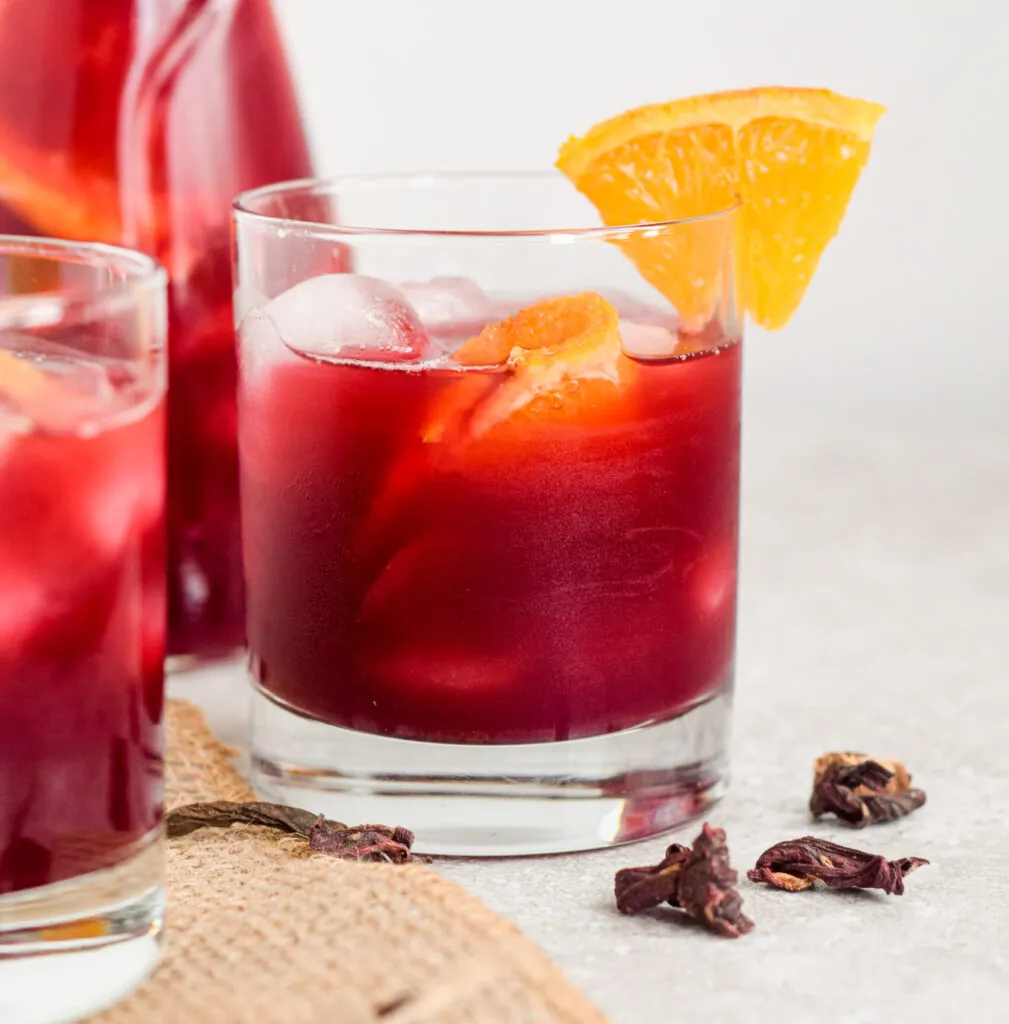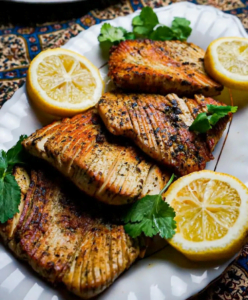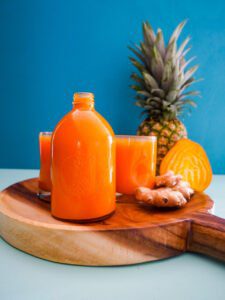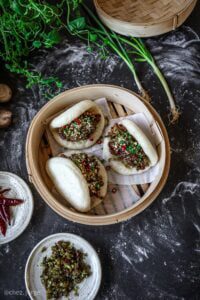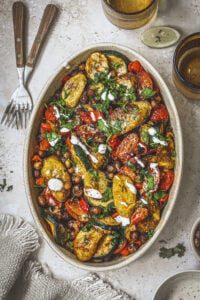Culture Tuesday is a monthly column in which Best of Vegan Editor Samantha Onyemenam explores the cuisines of different cultures across the globe through a plant-based and vegan lens. In this article, Samantha shares a list of 10 amazing vegan West African Drinks you need to try.
10 West African Drinks You Need to Try
Over the last couple of years, West African cuisine has become more popular although emphasis has been on West African food such as Jollof rice, egusi, fufu, pounded yam, and tomato stew. However, not much attention has gone to West African drinks. These drinks are (mostly) healthy, full of nutrients, and made from whole grains. So, next time you enjoy a West African dish, or any dish, really, consider pairing it with one of these drinks….or you could just spend a day relaxing with a glass or two (or three) of any of these.
Zoomkoom
Zoomkoom is a mildly fermented sweet and spicy drink that originated in present-day Northern Ghana and Southern Burkina Faso. Its original recipe featured guinea corn, which is also known as sorghum and jowar. However, modern traditional recipes use millet in place of guinea corn. This results in an equally delicious drink, though the appearance of the drink differs.
Zoomkoom made following the original recipe is noticeably brown, but that made with millet features a creamy whiteish colour. This recipe by Lami of @LamiCooks is one that uses millet instead of guinea corn. It also includes ginger, black peppercorns, cloves, dried chillies, and grains of selim which are aromatic, nutritious, warming, and flavourful spices.
Asaana
Asaana is another mildly fermented drink originating in Ghana. It is made using fermented and germinated corn, water, and sugar that has been caramelised till it forms a dark amber syrup.
To make Asaana, the fermented and germinated corn is dried and roughly ground to break it up into smaller pieces. This ground corn is then cooked in boiling water for about an hour and sieved. The water strained out of the ground corn is harvested and combined with freshly caramelised sugar to make the cola-looking drink known as Asaana. This drink is often served with ice to make it a very refreshing drink for a hot day.
Here is a recipe by Ms. Zag of @MsZagsKitchen showing how she makes her Asaana using popcorn/yellow corn kernels (which might be easier to source than white corn kernels when outside West Africa).
Zobo/Sobolo
Zobo, also known as ‘sobolo,’ is a dark purple drink made from dried hibiscus calyces which originated amongst the Hausa people of Nigeria, Ghana, Côte d’Ivoire, Benin, and Burkina Faso.
Although its recipe differs with country, region, and household, it is common to find spices such as cloves, star anise, cinnamon and ginger in it. The Nigerian recipes for zobo often include cloves and ginger. However, they also include oranges and/or lemons, pineapples, and sugar (for added sweetness).
To make the average Nigerian zobo, the hibiscus calyces are washed thoroughly and placed in a large pot with the spices. The fruits are also washed and cut into large chunks. The pineapple rind is often added too. Water is added to the pot and the mixture is left to simmer for 30mins to an hour. Towards the end of the simmering stage, the pineapple flesh, ginger, and orange/lemon pieces are taken out, blended, and stirred back into the pot. The mixture is left to cool and then it is sieved to ensure the drink is smooth. Sugar is added if more sweetness is needed then the cooled Zobo is placed in the fridge till cold (although it can also be enjoyed warm or hot).
This Sobolo recipe by Afia Amoako, aka The Canadian African, combines dried hibiscus flowers with ginger, cloves, and cinnamon for a flavorful and healthy drink that can be enjoyed hot or cold. Click here for the recipe.
In this recipe, Winifred of @ZeeliciousFoods shows how she makes her zobo. She includes cucumbers in her drink and uses additional orange juice to sweeten it as she prefers to not add refined sugars to her zobo.
Kunu Aya
Kunu aya, also known as, ‘tigernut milk,’ is a drink that originated amongst the Hausa people of Nigeria. It is made by combining freshly made tigernut milk with freshly made coconut milk and blending the mixture with dates, and ginger before straining it. The resulting drink is creamy, delicious, refreshing, and very nutritious. It is usually served cold, but can be heated for a warming drink.
In this recipe, Bee from @pure_dove and Bee Without Limits shows you how she makes her Kunu Aya using dried tigernuts, coconuts, dates, and ginger.
Rice Lamurgee
Rice Lamurgee is a spiced rice drink that originated amongst the Hausa people of Northern Ghana. It is made by blending soaked rice with fresh water, fresh ginger, black peppercorns, cloves, and chilli powder. The blended mixture is strained through a fine cheesecloth so the drink is smooth. Tamarind pulp is dissolved in water then strained and stirred into the spiced rice mixture, to taste, to add a sweet and sour flavour, as well as a range of additional nutrients and fibre. The drink is further sweetened with some sugar and served over ice for a refreshing cool drink.
In this recipe, Fauzia of @fauzia.moula shows how she makes her Rice Lamurgee. She also shows her trick for extracting the tamarind pulp from whole pods easily to speed up the process, and reduce the effort needed, to make some Rice Lamurgee.
Emudro
Emudro, also known as, ‘Hausa Beer,’ is a non-alcoholic Northern Ghanaian spiced tamarind drink. It is made by combining freshly made tamarind juice (from dissolving tamarind pulp in water) with a blended and strained mixture of ginger, black peppercorns, cloves, and dried chillies. This mixture is sweetened with some sugar, to taste, and the final product is a sweet, sour, and spicy refreshing drink which is served cold.
In this recipe, Lami of @LamiCooks shows how she makes her Emudro. It is a rather simple and easy to follow recipe that results in a very delicious and moreish drink.
Chapman
Chapman is a quintessential Nigerian mocktail which originated in Ikoyi Club in Lagos, Nigeria (Western Nigeria). It is believed to have been named after a member of the country club who asked one of the restaurant staff to surprise him with a new and refreshing drink. Although this drink originated in Ikoyi Club, and Ikoyi Club still makes the best Chapman, it has grown in popularity to the point that it is on the menu of almost every restaurant in Lagos and in other states across Nigeria.
Despite its delicious taste that keeps people coming back for more, Chapman, is probably one of the least healthy West African drinks die to its high sugar content and low amount of fresh ingredients. This mocktail is made by combining grenadine with Ribena (or a similar blackcurrant cordial), Fanta, Sprite, Angostura bitters, freshly sliced cucumbers, and freshly sliced lemons and/or limes. They are traditionally served in pint-sized glass dimpled beer tankards with ice to keep the drink cool and refreshing.
No bottled commercially sold Chapman, thus far, has tasted quite like freshly made Chapman so, this is one mocktail that should either be ordered at a Nigerian restaurant or be made and served fresh following recipes such as this one by Yemisi of @sisi_yemmie and SisiYemmieTV.
*Disclaimer: Although Chapman is classified as a mocktail, Angostura bitters is alcoholic (44.7% ABV). Only a dash of Angostura bitters is added to the Chapman. Thus, the final drink has a negligible amount of alcohol despite having the required flavour from the Angostura bitters. In Nigeria, this drink is considered to be child-friendly (in controlled quantities due to its sugar content) and halal (as the alcohol content is as negligible as that of cakes made with vanilla extract). However, this can be to the discretion of the parents or Muslim individuals.
Ginger Beer
As seen in the Hausa Beer (Emudro) recipe, drinks referred to as “beer” in West Africa are not always alcoholic (although the majority of them are). In this case, like Emudro, Ginger Beer, is a non-alcoholic drink.
It is a popular drink across West Africa. However, the general/average recipe differs with country. For example, Gambians add vanilla extract to their ginger beer, while Nigerians add pineapples, and Ghanaians add grains of selim and dried chillies (these additions are not exclusive to the mentioned countries). Regardless of the differences, the star of this drink still shines – ginger.
In these recipes by Dada of @dadasfoodcraves, Gladia of @ibeethechef, and Antoinette of @calnette_george show how to make Gambian, Liberian, and Sierra Leonean ginger beer, respectively. Despite their differences, each recipe results in a delicious drink.
Gambian
Liberian
Sierra Leonean
Garri
Garri is on this list solely because of the phrase, “drink garri,” which is what Nigerian say when referring to eating garri made this way. Some might argue that garri is a cereal as it has toppings and is often served in a bowl and eaten with a spoon although it can also be served in a cup. Nevertheless, due to the phrase, in this piece, garri will be considered to be a drink.
Garri is dry granulated cassava. It is made by washing, peeling, grating, and mashing/roughly grinding fresh cassava. It is fermented, dried, and fried to form the course flour sold as garri.
To make drinking garri, the garri is mixed with ice cold water and sugar. It is often mixed or topped off with roasted groundnuts (roasted peanuts) and/or shredded, chopped, or desiccated coconut. However, these are optional.
Over the years, variations of drinking garri have been made by individuals to suit their preferences. For example, some people prefer to replace the cold water with cold milk while others, such as Sisi Oloju Ede of @sisiolojuede, prefer to use caramelised peanut brittle (namely, konkada – a Togolese peanut brittle) in place of the roasted groundnuts. You can find Sisi Oloju Ede’s quick and easy garri recipe here:
Groundnut Milk
Groundnut milk is a Nigerian drink made from peanuts (groundnuts). It forms the base of other drinks and puddings such as, Kunun Gyada.
Groundnut milk is made by blending soaked and peeled raw peanuts with water, sieving the mixture through a cheesecloth then sweetening the milk or adding flavours such as vanilla extract. It can be consumed immediately, but some people prefer to boil it and leave it to cool prior to drinking to kill off any germs or toxins that might have remained in the peanuts after washing.
In this recipe, Flo of @flochinyere and AllNigerianRecipes.com shows how she makes her Groundnut Milk which she enjoys on its own and also uses as a dairy substitute or to make other Nigerian dishes
Article by Samantha Onyemenam. Featured Image by Afia Amoako/The Canadian African.
SAVE/PIN/SHARE


You Might Also Like…
If you enjoyed these recipes, you might also like these mocktail recipes.
https://bestofvegan.com/14-vegan-mocktail-recipes-that-are-better-than-booze-and-arent-just-juice/


